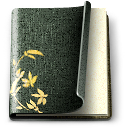Japanese Tea History
- Published 2010.7.13

Japanese tea comes from China. Japanese priests and envoys brought tea from China in the 9th century. It became a drink of the royal classes and priests.
After that, in the 12th century, Kamakura Period, the famous Zen priest Eisai brought back tea seeds to Kyoto. Some of the tea seeds were given to the priest Myoe Shonin, and became the basis for Uji tea.
In the 15th century, tea was used only by the upper classes and they treated it as an event. At that time, tea color was dark red. It was totally different from sencha, green tea.Tea cult was developed from 15th over several centuries by Sen Rikyu.
In the 17th century, Japanese sencha(Japanese: ńģÄĶīČ) was developed, which is an unfermented form of green tea. Sencha is now one of Japan's mainstay teas.
At the end of the 17th century, machine manufacturing of green tea was introduced and took over the processes of primary drying, tea rolling, secondary drying, final rolling, and steaming.
